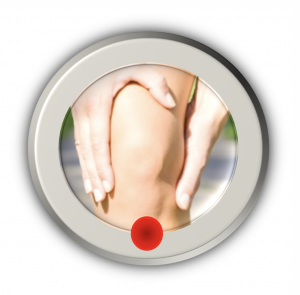
What is Osgood-Schlatter disease?

Osgood Schlatter disease is a common cause of knee pain in active children between the ages of 8 and 15 years. It affects 1 out of 10 adolescent who participates in sport and appears to affect boys more than girls. Children who specialise early in sport appear to have a 4 times greater risk of developing this condition. The condition presents as pain in the front of the knee, usually localised to the tibial tuberosity which is the bony prominence beneath the knee cap. It occurs as a result of pulling or traction of the patella tendon at the point that it inserts on to the tibia (shin bone).
What is a self-limiting condition?
‘Self-limiting’ is a clinical term which is used to describe an injury or condition that will resolve without intervention and that will not cause any long-term harmful effects to that person. It is important that parents, coaches, medical professionals and the patients themselves do not see this as a license to ‘work through’ pain or take analgesics or anti-inflammatories to mask the pain to continue with sport without any modification. There is current evidence to suggest ongoing pain and impaired function in children with Osgood Schlatters for up to 4 years after diagnosis. In addition, marked decreases in strength seem to persist after the pain has resolved. These may lead to further knee pain or injury at a later stage. Further, participating in sporting activity with pain leads to changes in motor control and movement patterns which may lead to further injury. The important take home message: Modify the growing activity to decrease the pain experienced by the athlete until the pain resolves.
Common signs and symptoms of Osgood Schlatters
- Pain and swelling occur where the patella inserts on to the shin bone
- A bump is often visible and can be painful to touch
- Pain is worse with running, jumping or going up or down stairs
- There is often pain on resisting the straightening of the knee
What is the best treatment for this condition?
Most importantly, the athlete needs to modify their activity. This can include reducing the number, duration or intensity of the practices. There is some benefit observed for a complete break of 7-10 days from all sporting participation followed by a gradual return to performance.
Ice can be used on the area. Iced should only be applied for 15min intervals only!
Progressive leg strengthening has been found to improve symptoms, strength and jumping performance and is important to prevent potential long-term dysfunction. Consult a physiotherapist or biokineticist for a rehabilitation programme.
References
Circi E, Atalay Y, Beyzadeoglu T (2017) Treatment of Osgood-Schlatter disease: review of the literature. Musculoskelet Surg. Dec;101(3):195-200.
Rathleff MS, Winiarski L, Krommes K, Graven-Nielsen T, Hölmich P, Olesen JL, Holden S, Thorborg K (2020) Activity Modification and Knee Strengthening for Osgood-Schlatter Disease: A Prospective Cohort Study. Orthop J Sports Med. Apr 6;8(4)
Rathleff MS, Winiarski L, Krommes K, Graven-Nielsen T, Hölmich P, Olesen JL, Holden S, Thorborg K (2020) Pain, Sports Participation, and Physical Function in Adolescents With Patellofemoral Pain and Osgood-Schlatter Disease: A Matched Cross-sectional Study.J Orthop Sports Phys Ther. Mar;50(3):149-157.
